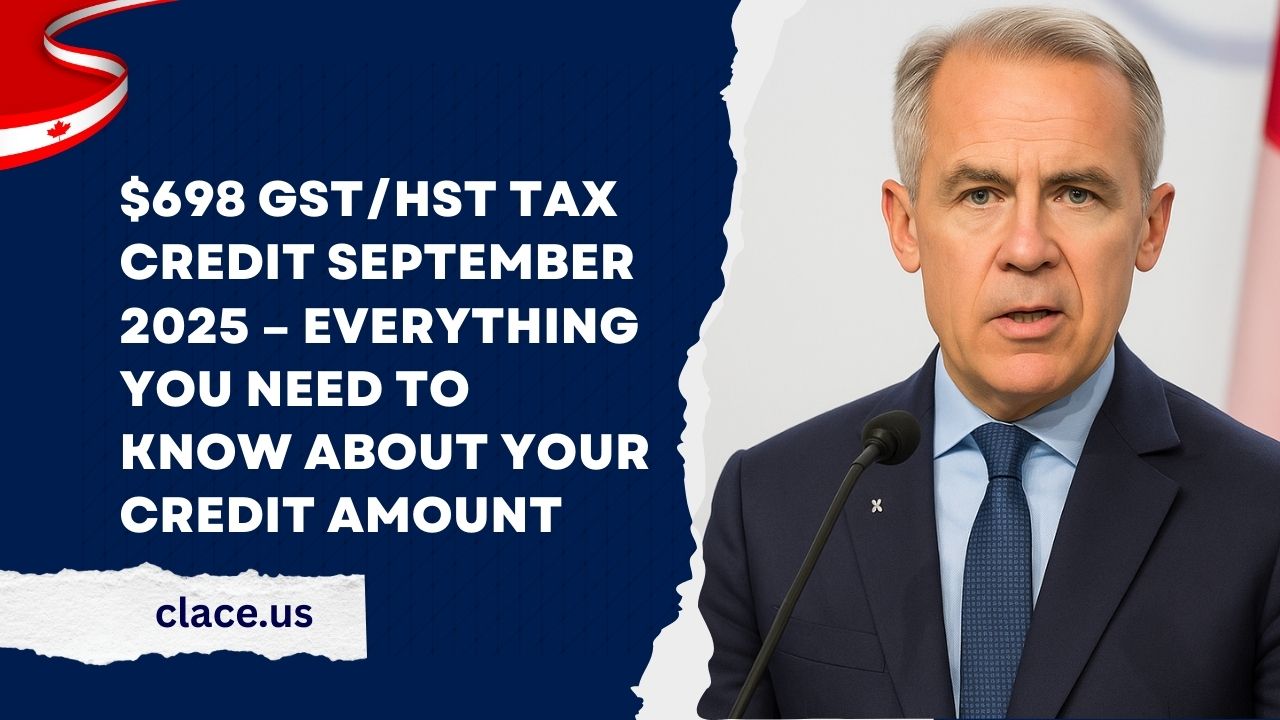$698 GST/HST Tax Credit September 2025 – Everything You Need To Know About Your Credit Amount
The GST/HST Tax Credit is one of the most significant benefits provided by the Canada Revenue Agency (CRA) to support Canadians with low or modest incomes. It is a quarterly payment that helps offset the impact of the Goods and Services Tax (GST) and Harmonized Sales Tax (HST) on everyday purchases.
In September 2025, eligible Canadians can expect a maximum $698 GST/HST Tax Credit for couples or common-law partners, with additional amounts for children under 19.
This program ensures fairness by returning part of the tax burden back to families and individuals who need it most.
Eligibility for the $698 GST/HST Tax Credit
To qualify for the September 2025 GST/HST Credit, individuals must meet the eligibility standards outlined by the CRA:
- You must be at least 19 years old.
- You must be a Canadian resident for tax purposes.
- You must have filed your 2024 income tax return.
- Those under 19 may still qualify if they are living with a spouse or common-law partner, are parents living with their child, or are permanent residents.
Meeting these requirements ensures that the CRA automatically calculates and issues the credit.
Credit Amounts for September 2025
| Category | Credit Amount |
|---|---|
| Single individual | $306 |
| Couple/common-law partners | $698 |
| Each child under 19 | $184 |
| Family of four (example) | $1,250+ depending on income |
The actual credit received will depend on net family income. As income rises above a certain threshold, the benefit gradually decreases until it phases out completely.
Payment Schedule for GST/HST Tax Credit 2025
The GST/HST Credit is issued four times a year. For the September cycle, payments are aligned with the fall distribution date. The schedule for 2025 is as follows:
- January 3, 2025
- April 4, 2025
- July 4, 2025
- October 3, 2025
This means that although referred to as the September payment, most recipients will actually receive the deposit on October 3, 2025. Direct deposit ensures quick access to funds, while cheques may take a few additional days.
How to Receive the GST/HST Tax Credit
In most cases, you do not need to apply for the GST/HST Credit. As long as you file your tax return on time, CRA will automatically assess eligibility and issue payments.
Steps to ensure smooth processing include:
- Filing your 2024 tax return even if you had no income.
- Updating your banking information with CRA for direct deposit.
- Ensuring your address and marital status are correct in your CRA profile.
If you are new to Canada or your status has recently changed, you may need to provide additional documents to CRA to establish eligibility.
Key Reminders for September 2025 Payments
- Payments are non-taxable and will not reduce other benefits such as the Canada Child Benefit (CCB) or Old Age Security (OAS).
- If your income has changed significantly, CRA will reassess your eligibility after tax filing.
- Payments are calculated annually but delivered quarterly, so the September cycle is part of a larger yearly structure.
- Those who qualify for provincial or territorial credits may see them added to their GST/HST Credit automatically.
The $698 GST/HST Tax Credit for September 2025 offers real support for Canadians struggling with daily expenses.
Whether you are a single individual, a couple, or a family with children, this credit helps reduce the impact of GST and HST on your budget.
With payments scheduled for October 3, 2025, recipients can count on timely assistance to ease financial pressure.
FAQs
Couples or common-law partners will receive $698, plus $184 for each child under 19, provided they meet CRA eligibility rules.
No. The credit is automatically applied when you file your annual tax return with the CRA.
The payment is scheduled for October 3, 2025, as part of the CRA’s quarterly payment cycle.
